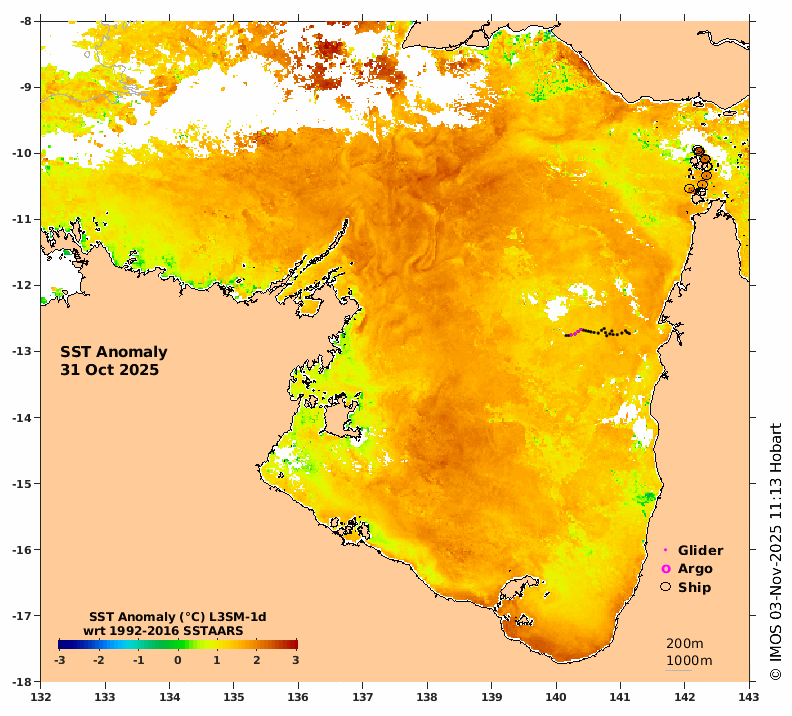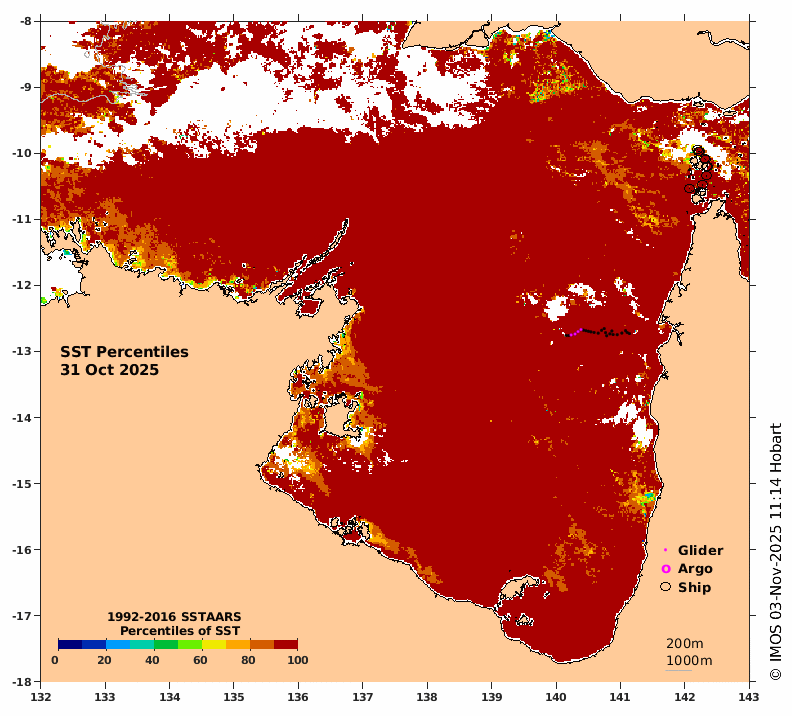News
‹ back to weather news
News
-
Tropical cyclone season begins with warm oceans surrounding northern Australia
Ben Domensino, 4 November 2025The 2025-26 tropical cyclone season has begun with abnormally warm oceans surrounding northern Australia, signalling an increased risk for severe tropical cyclones in the coming months.
The Australian tropical cyclone season runs from November 1 to April 30. During this six-month period, there are usually about 9 to 10 tropical cyclones in the Australian region, with around half of these typically becoming severe tropical cyclones (category three or higher).
This season has potential to feature an unusually high proportion of severe tropical cyclones due to abnormally warm ocean temperatures near northern Australia.
All tropical cyclones need sea surface temperatures at or above 26.5°C to form. Once over this threshold, the rate at which tropical cyclones can intensify generally increases with higher ocean temperatures.
Sea surface temperatures to the north of Australia are currently above 27°C and even higher than 31°C in some areas near the to the Top End and in the Gulf of Carpentaria. These temperatures are about 1 to 3°C above average and rank in the top 10 percent of historical records for this time of year.

Image: Sea surface temperature anomalies in the Gulf of Carpentaria on October 31, showing warmer-than-normal water for the start of the tropical cyclone season. Source: IMOS

Image: Sea surface temperature centiles in the Gulf of Carpentaria on October 31. The red areas show where temperature area in the highest 10 percent of historical records. Source: IMOS
Having so much warm water near northern Australia at the start of November means there is abundant fuel for tropical cyclone development this season. Tropical cyclones that form in the Australian region in the coming months will have a higher-than-normal potential to strengthen into severe tropical cyclones, thanks to the abnormally warm oceans surrounding northern Australia.
- Other news
- Tue 04 Nov 2025 Snowing in Victoria on Melbourne Cup Day
- Mon 03 Nov 2025 Hottest October on record in Queensland, Northern Territory
- Mon 03 Nov 2025 7.7 million lightning pulses over Australia in one week
- Sat 01 Nov 2025 Lightning, hail and deluges thrashing Qld and NSW
- Fri 31 Oct 2025 Warmest October on record for Sydney, Brisbane

